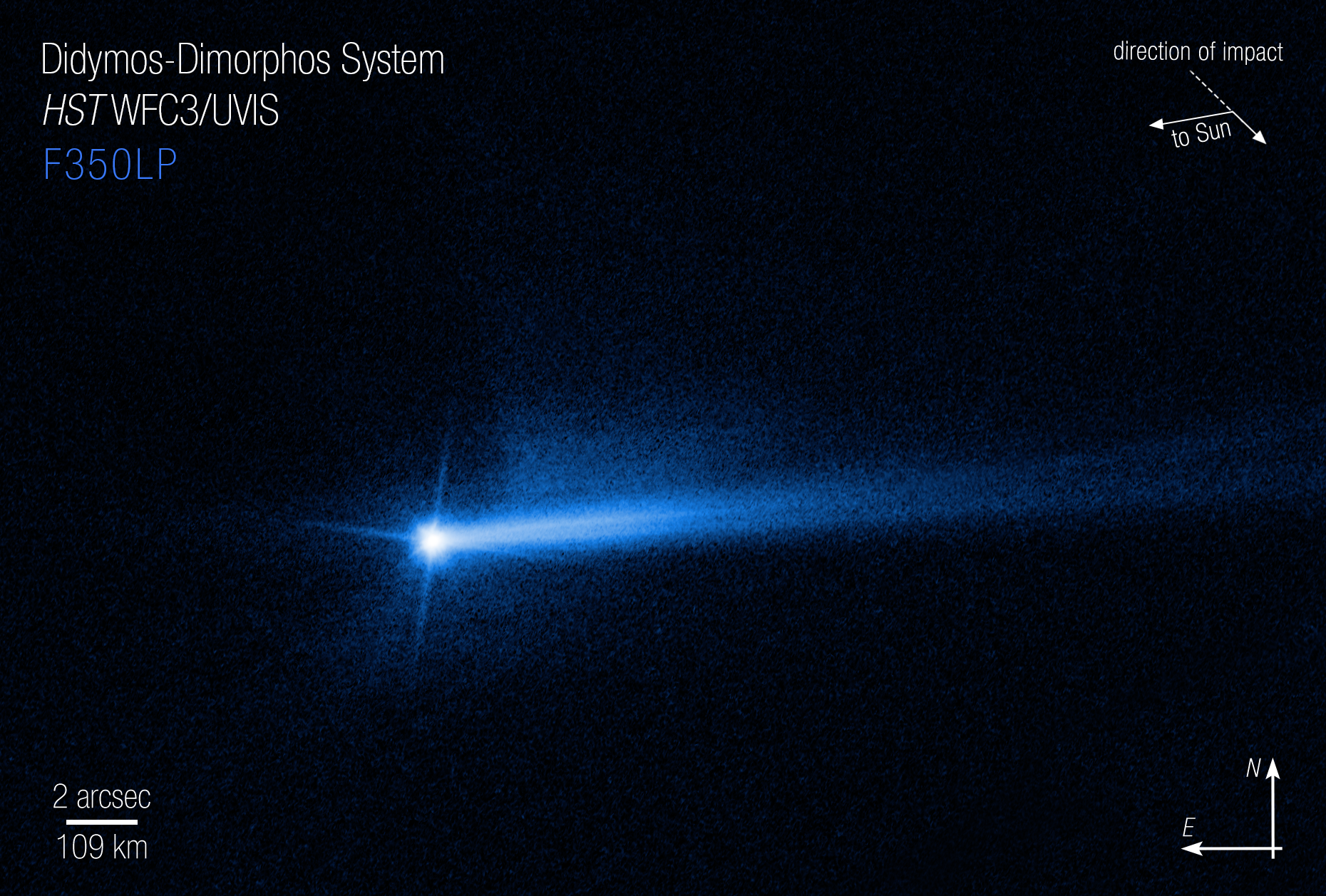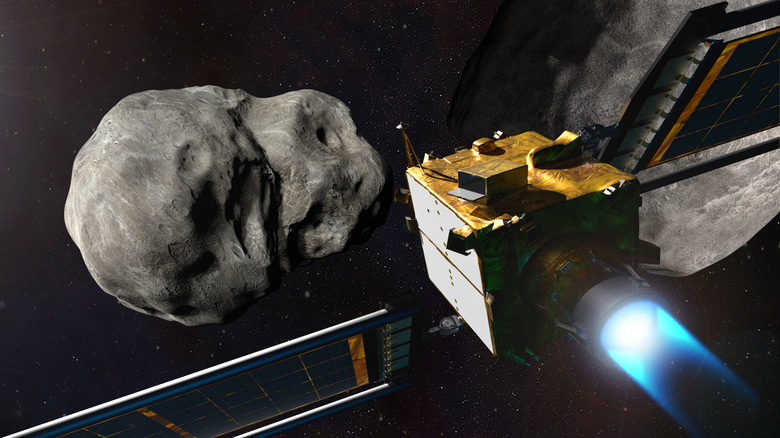NASA's Mission To Crash D.A.R.T. Into An Asteroid Gave Us An Unexpected Revelation
NASA's successful mission to crash a spacecraft into an asteroid in an attempt to change its trajectory has done more than just teach us how physics affects space rocks. It has also taught us more about the asteroid age, particularly just how old Dimorphos and its larger companion, Didymos, are.
See, just before impact, NASA's D.A.R.T. spacecraft took several images of Dimorphos and its companion, and scientists were able to inspect aspects of the asteroids through these images. What they discovered is that these two rocky bodies have a very complicated history.
For example, both asteroids appear to have originated from the destruction of a larger parent asteroid. However, exactly what might have destroyed that parent asteroid is unknown. They suspect that Didymos formed around 12.5 million years ago, while a similar analysis of Dimorphos suggests the asteroid's age to be roughly 300,000 years old.
Scientists pulled these clues from boulders found on the surface of the two asteroids, which they say could not have formed from impacts on the surfaces of the asteroids themselves, as the impacts would have completely disintegrated the two rocky bodies.

Both Didymos and Dimorphos are what we call "rubble pile" asteroids. This means they are both made up of an aggregation of smaller debris. This would explain why we saw a tail of debris ejected from the asteroid after D.A.R.T. collided with it. Scientists also suspect that Didymos formed within our solar system's main asteroid belt—located between the planets Jupiter and Mars. It was then later knocked into the inner solar system.
Neither asteroid poses an actual threat to Earth, thankfully, which is why NASA thought they would act as a good target for the D.A.R.T. test. However, studying them will undoubtedly help us come up with better ways to deal with asteroid threats and perhaps help us determine the age of other asteroids out there.
